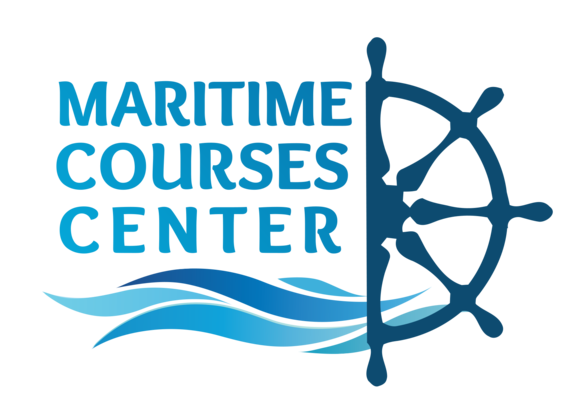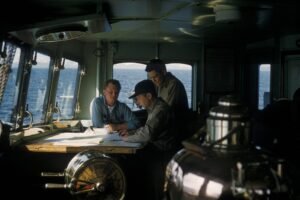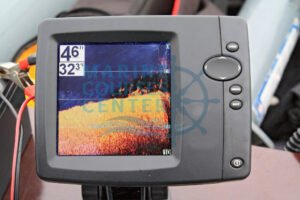
Your Ultimate Guide to Navigational Excellence
Mastering Maritime Navigation with Pilot Cards: Your Comprehensive Guide
Table of Contents

Introduction to Pilot Card
Navigating the vast oceans and intricate waterways demands a combination of experience, knowledge, and cutting-edge tools. One such essential tool that holds the key to safe and accurate navigation is the Pilot Card. This comprehensive guide explores the world of Pilot Cards, their functionalities, benefits, and the pivotal role they play in ensuring successful maritime journeys.
Pilot Card: Unveiling Navigational Precision
Pilot Card: A Detailed Overview
At the heart of maritime navigation lies the Pilot Card, a meticulously crafted navigational chart that provides mariners with crucial information about specific waterways, ports, and harbors. These cards are not just ordinary charts; they are a mariner’s best friend, offering essential data that guides them through complex routes with precision and confidence.
The Importance of Pilot Cards
Navigational Excellence: Safeguarding Safe Passage
Navigating through intricate waterways requires a deep understanding of the environment. Pilot Cards offer navigators a wealth of information, including water depths, potential hazards, navigational aids, and landmarks. With this knowledge at their fingertips, mariners can ensure safe passage through challenging waters, avoiding dangers and reducing the risk of accidents.
The Evolution of Pilot Cards
From Cartography to Digital Precision
The evolution of Pilot Cards is a testament to the advancement of maritime technology. What once began as hand-drawn charts has transformed into a digital revolution. Modern Pilot Cards integrate advanced hydrographic survey data, electronic navigation systems, and real-time updates, providing navigators with accurate and up-to-date information.
Benefits of Utilizing Pilot Cards
Navigational Confidence: A Safer Journey
- Precision: Pilot Cards offer accurate and precise information about water depths, helping mariners navigate confidently even in shallow waters.
- Safety: By highlighting potential hazards and submerged obstacles, Pilot Cards contribute to safer navigation and prevent accidents.
- Efficiency: Navigators can optimize routes based on the information provided by Pilot Cards, leading to fuel savings and reduced travel time.
- Situational Awareness: Pilot Cards enhance situational awareness, enabling mariners to make informed decisions and adjustments to their course.
Harnessing the Power of Pilot Cards
Navigating with Precision: How Pilot Cards Function
Pilot Cards are meticulously prepared through hydrographic surveys, which collect data about water depths, underwater features, and potential hazards. This data is then transformed into detailed charts that form the foundation of Pilot Cards.
Mastering Pilot Card Usage: Best Practices
Navigational Expertise: Enhancing Navigational Proficiency
To effectively utilize Pilot Cards, mariners should adopt these best practices:
- Regular Updates: Ensure Pilot Cards are regularly updated to reflect any changes in water conditions and navigational aids.
- Cross-referencing: Compare Pilot Cards with other navigational resources to ensure accuracy and consistency.
- Preparation: Familiarize yourself with the details presented on the Pilot Card before embarking on your journey.
Frequently Asked Questions about Pilot Cards
Is the Use of Pilot Cards Mandatory?
While regulations may vary by region, Pilot Cards are often recommended or mandated for safe navigation in specific areas.
Can Pilot Cards Replace Electronic Navigation Systems?
Pilot Cards complement other navigational aids, such as GPS, radar, and AIS, to ensure comprehensive situational awareness.
Do Pilot Cards Cover All Waterways?
Pilot Cards are typically available for major ports, waterways, and areas with complex navigation requirements.
How Often Should Pilot Cards Be Updated?
Regular updates are crucial, especially in areas with dynamic water conditions, to ensure accurate and current information.
Are Pilot Cards Available in Digital Formats?
Yes, many Pilot Cards are available in digital formats, allowing for real-time updates and seamless integration with electronic navigation systems.
Do Pilot Cards Enhance Nighttime Navigation?
Absolutely, Pilot Cards provide mariners with the critical information needed for safe nighttime navigation through unfamiliar waters.
Pilot Card Information Checklist
- Ship’s Particulars:
- Ship Name
- Call Sign (C.S)
- Displacement
- Deadweight Tonnage (DWT)
- Year Built
- Length Overall (LOA)
- Breadth
- Bulbous Bow (Yes/No)
- Draught: Forward, Aft, Midship’s
- Port Anchor Details: Shackles, Weight
- Starboard (Stbd) Anchor Details: Shackles, Weight
- Loaded/Ballast Manifold:
- Details of Manifold for Loading and Ballasting
- Air Draught:
- Height of Vessel Above Waterline
- Engine Information:
- Engine Type
- Manpower (Crew)
- RPM/Pitch
- Speed When Loaded
- Speed When Ballast
- Steering System:
- Rudders Type
- Maximum Rudder Angle
- Propeller Type (CPP/Fixed Pitch)
- Thrusters Information: Bow Power, Stern Power
- Steering Gear Details
- Equipment Checked and Ready for Use:
- Anchors (Ready for Use)
- Whistle (Ready for Use)
- Flags (Ready for Use)
- X-Band Radar (Ready for Use)
- S-Band Radar (Ready for Use)
- Speed Log (Ready for Use)
- Echo Sounder (Ready for Use)
- Electronic Navigation Positioning System (ENPS) (Ready for Use)
- Compass System (Ready for Use)
- Steering Gear (Ready for Use)
- Rudder/RPM/Rotational Indicators (Ready for Use)
- Very High Frequency (VHF) Radio (Ready for Use)
- Mooring Winches and Lines (Ready for Use)
- Equipment Operational Defects:
- Any Operational Defects or Malfunctions
- Other Important Details:
- Any Other Relevant Information
- Master’s Name and Date:
- Name of the Master (Captain) of the Ship
- Date of the Pilot Card
This comprehensive checklist provides essential information that ensures a vessel is well-prepared for safe and efficient navigation through complex waterways. Each category covers specific aspects that mariners need to consider for a successful voyage.
Conclusion
In the world of maritime navigation, knowledge is power, and Pilot Cards serve as an embodiment of that power. As mariners navigate through intricate waterways, these comprehensive navigational charts guide them with accuracy, safety, and confidence. By providing essential information about water depths, hazards, and navigational aids, Pilot Cards empower navigators to make informed decisions and ensure successful journeys. With the evolution of technology, Pilot Cards continue to evolve, ensuring that mariners can navigate through both calm seas and challenging waters with unwavering expertise.
if you want to find ship position join marine traffic website



